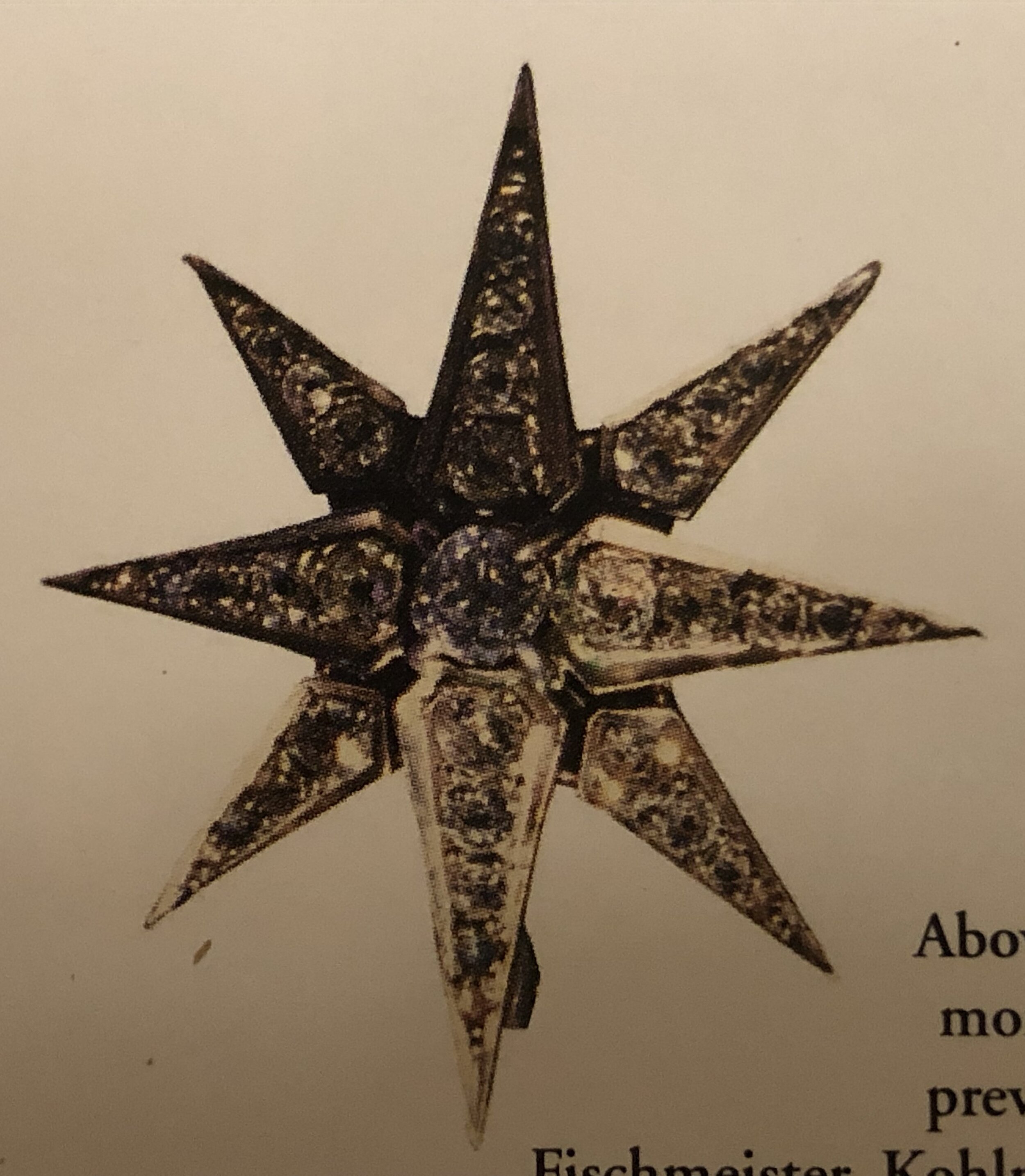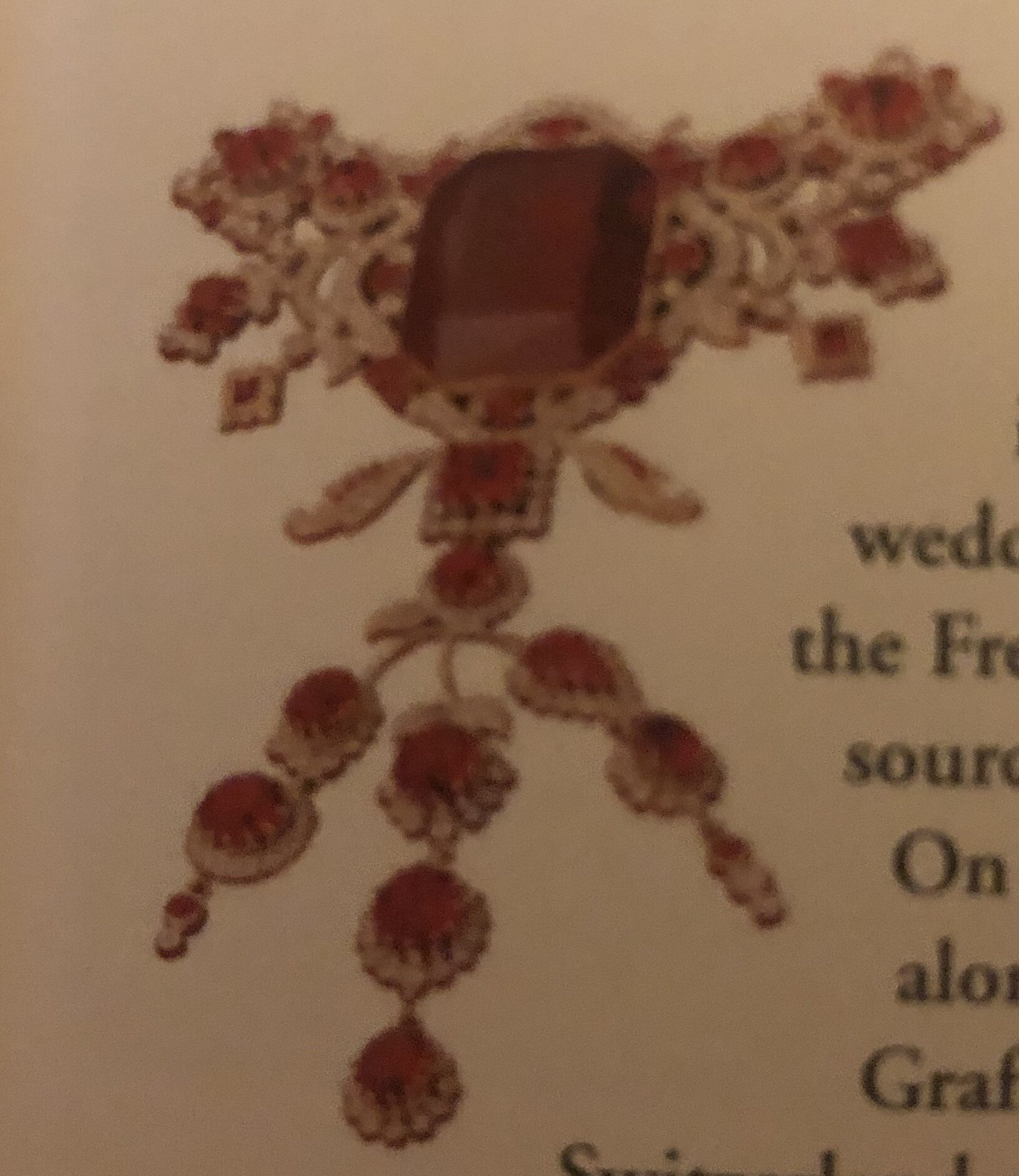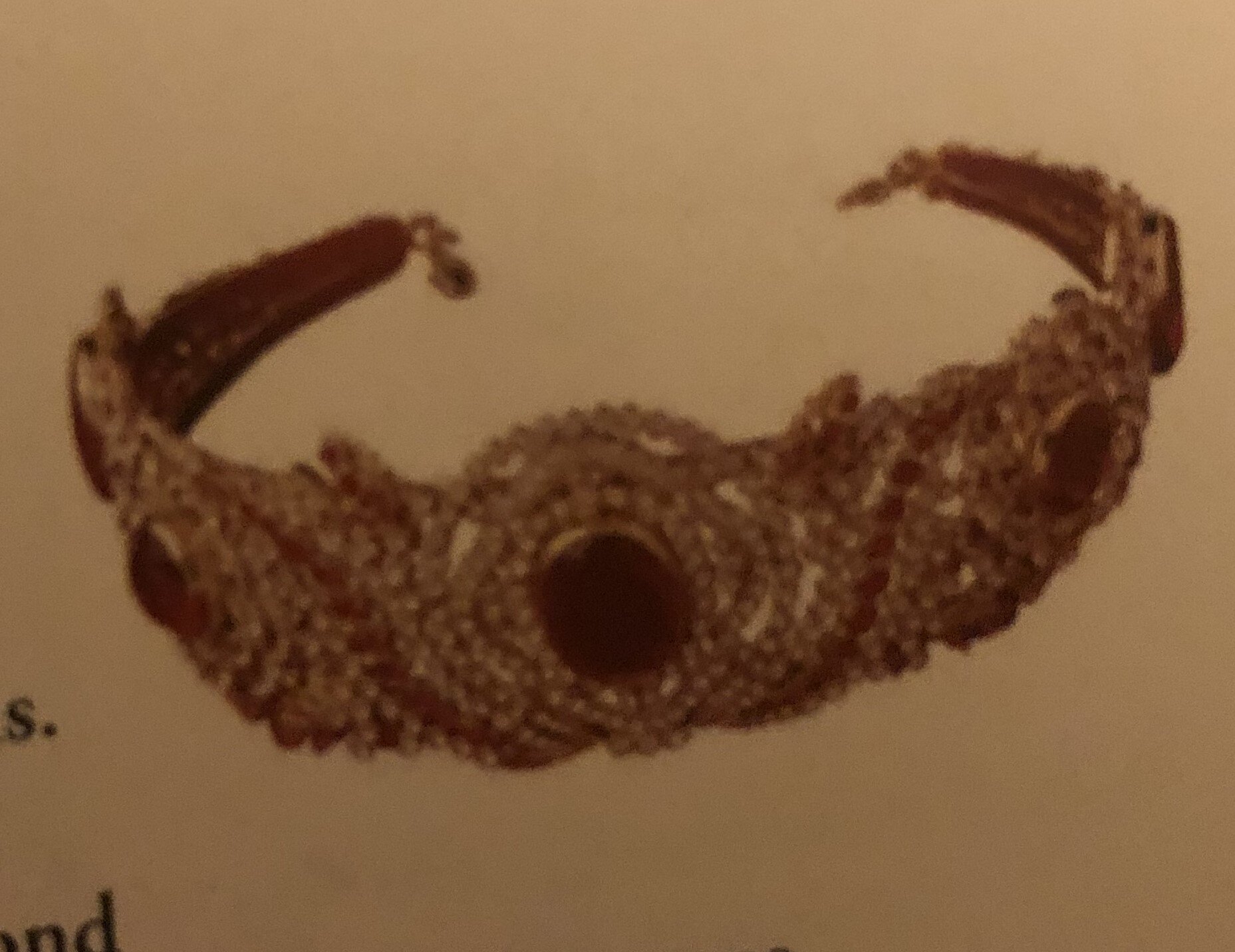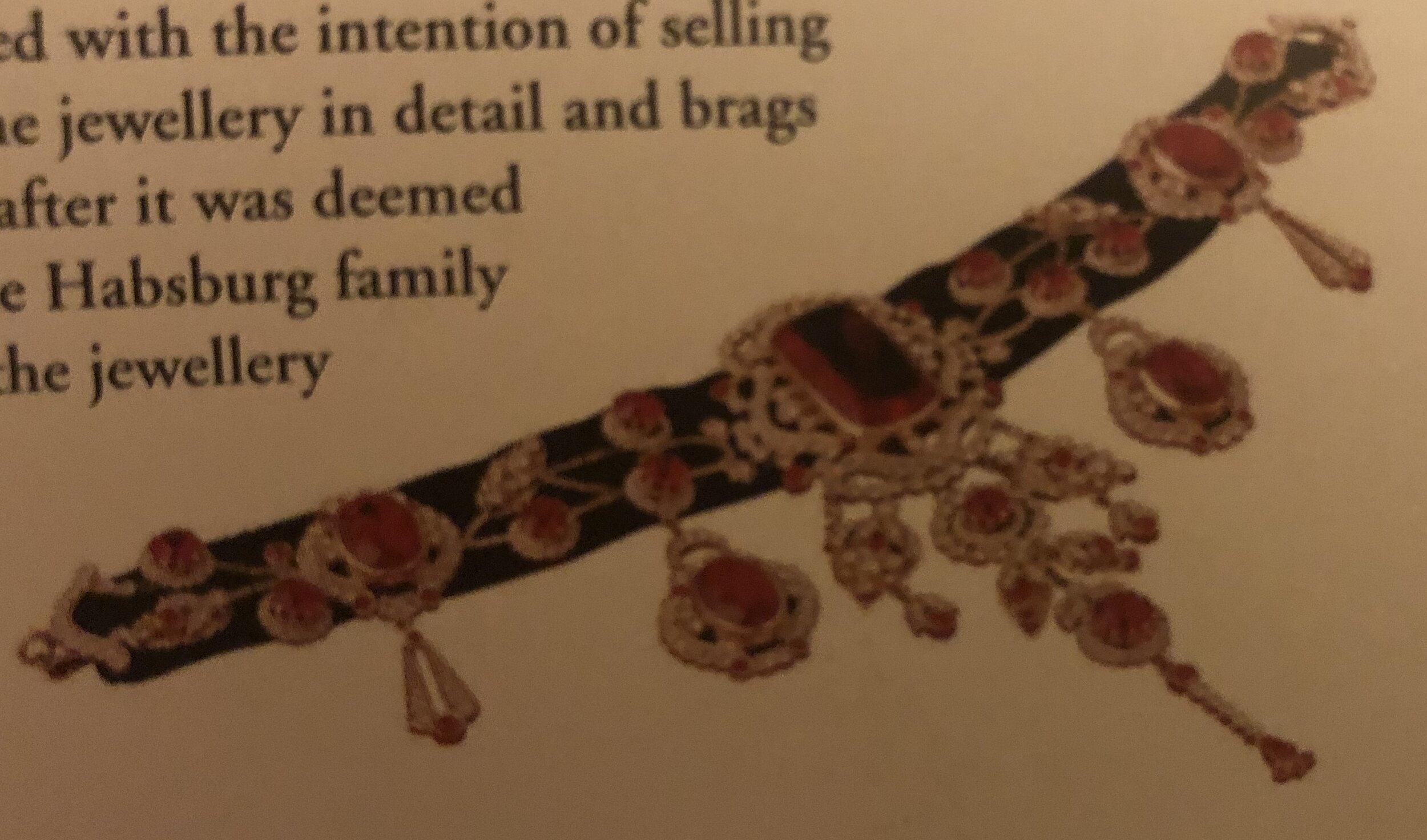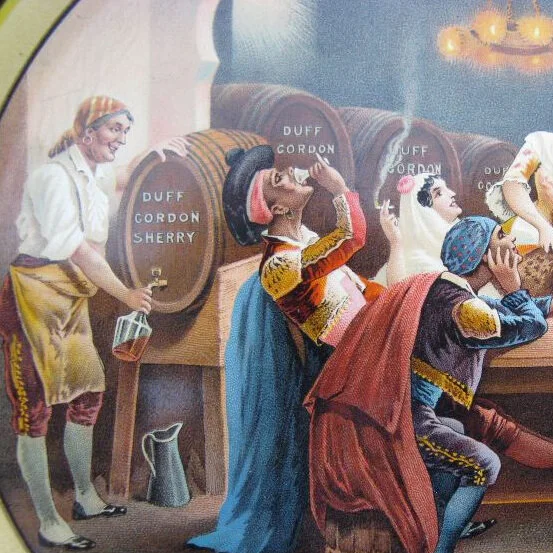Animating the Image: Sisi's Stars
This post follows on from an earlier one I did on The Magical Zwischenreich: the utility of film for hermetical workings. “Magic” is the art and science of getting other peoples’ will to align with one’s own. Another way of looking at this is multiplying the power of one person’s will by influencing crowds to share that will. Today the advertising industry, public relations industry, mass media, and to a large extent the education industry all work to this same end, though they explain their mission in the language of behavioral science, pedagogy, psychology, entertainment etc., rather than Ancient Greek or Arabic notions of ‘magic’ and the natural world.
Film was something of a breakthrough for people interested in hermetic knowledge, because when the film speed of 16 frames per second was recognized to most comfortably ‘bring the image to life’ for the human eye, the modern understanding of human sensory perception (“psychophysics”) seemed to confirm hermetic assertions about the magic power of images. That this ‘animation’ worked on crowds of people at a time in a film theater must have been tantilizing for seekers of hermeticly-sourced power.
Film was not the first way of employing “images”, it was simply the best to date. Prior to film, the media which most readily spoke to crowds was newspapers; most of Aby Warburg’s Mnemosyne images came from mass-media like magazines, newspapers, or poor-quality reproductions of great art in books.
Before newspapers, books were able to reach large audiences but more slowly; before books, paintings spoke to however many souls were fortunate enough to get the chance to view them. I think the logic of Warburg’s Mnemosyne idea— a sort of atlas of images which “worked” on crowds throughout history— is partly explained in terms of the progression of mass-media.
Today’s post is on portraiture, and its more exclusive and consumable incarnation, fashion. When a contemporary person uses the word “image”, they probably mean something like a photograph, a jpeg file, a physical drawing or a painting. In the Picatrix, one of the most influential collections of writing on hermetic knowledge, the English word “image” is used to translate an Arabic concept which marries “image” and “spell”. Therefore, in Attrell and Porreca’s translation of this work on astral magic, the reader again and again is presented with different ways to cast “images” to work their will by collecting star-rays via special materials placed in relation to each other at the right time. When the ‘image’ absorbs the ‘star rays’ it is animated, empowered, brought to life. The right time to expose the image to the star rays is crucial.
The right time, of course, is determined by the position of the stars and planets in the sky. When Venus is powerful, star-rays will be propitious for casting spells regarding the following via the materials/languages/living beings/places listed [emphasis added]:
Venus is the source of the power of taste. She governs an aspect toward grammar, the art of poetic meter, sounds, and songs. From the languages, she governs Arabic. From the external appendages, she governs the right nostril. From the internal organs, she governs the vagina, the projection of sperm… From cloth types, she governs all those with decoration… Among locations, she rules places of vice where men tend to relax, where men do ritual dances, in places of merriment where singing and music arise, in places of beautiful ladies and women, as well as in places of eating and drinking. From the stones, she governs pearls… From the animals, she governs women, camels, beautiful things, all the handsome animals, and those balanced in their bodies, like gazelles, sheep, deer and rabbits…From the colors, she rules sky blue and gold lightly fading into green.”
Readers will note here how Arabic interpretations of Ancient Greek “magic” informed this mystical confluence of ideas: slavery/prostitution, Ottoman culture, and power, which I discussed in relation to Lucie Duff Gordon and the aristocrats she aped. Later on in the text, the Picatrix’s author elaborates further on Venus:
Venus is cold, humid, and a fortunate planet. She signifies cleanliness, neatness, reward, puns, delight in song, joy, illustrations, laughter, pictures, beauty, shapeliness, the beat of wind and string instruments, loving one’s bride [p 116 begins in Pingree’s Latin edition] and seeking spices and things that smell good. She delivers dreams and provokes games of chess and dice. She desires to sleep with women, to strengthen love with them, and she longs for faithfulness from them. She governs the desire to appear beautiful, to love freedom, nobility of heart, and joy. She abhors anger, quarrels, vengeance and lawsuits. She wishes to guard the desire for friends and has a focus on the opinions of the world. She welcomes false oaths and is inclined toward desire. She desires to drink excessively. She incessantly desires abundant sex in filthy ways and to do it in inappropriate places, such as some women are accustomed to doing with others. She governs loving in animals and children and making good things for them, exerting fairness in things, delighting in merchants and living with them, being loved by women, being loved by men, being a good host, involving oneself in the manufacture of crowns, making stable things, operating from stones, having a sweet skill, looking down on the world with no fear of it, holding back humankind from anger, quarrel or discord; she demonstrates a soft heart and will toward litigation, and she denotes weakness in battles. She signifies the desire for all beautiful well arranged things to conform to her will. She governs making tinctures and working diligently in the skills pertaining to them, selling merchandise, shows, and speeches, observers of law, and being bound to the desires that inhibit science and philosophy.
Readers of my previous post on Sisi may be struck by similarities between this hermetic Venus and the personality of Franz Joseph’s wife: her beauty cult; obsession with slenderness and tight-lacing; preoccupation with prostitution, political fixations, courtship of the press, affinity for merchant bankers, and willful egotism. Please also remember “involving oneself in the manufacture of crowns”.
The Picatrix even has fashion advice for invoking Venus in a hermetical working:
When you wish to pray to Venus. When you wish to pray to Venus and request something from the matters pertinent to her, let her be free from unfortunate planets, direct, not retrograde, and in a favorable position. Afterward, dress and adorn yourself with one of her two ornaments, the best of which is the clothing and ornaments of Arab noblemen. Dress yourself in white clothes, and on your head wear a white headdress, because it is her symbol. The other is an ornament like a woman’s veil. Dress yourself in ample, precious, and beautiful silk clothes interwoven with gold. Place a crown on your head adorned with precious pearls and stones. Wear a gold ring on your hand decorated with a stone of pearl and golden bracelets on your arms. Take up a mirror in your right hand, and in the left carry a comb…
The “clothing and ornaments of Arab noblemen” is difficult to pin down circa 1000 A.D., when the Picatrix is believed by some to have been written, they would have looked something like this:
“Figure 2 – Dioscorides and a pupil, De Materia Medica of Dioscorides by Yusuf al-Mawsili. Mosul, Dec. 1228. Folio 2b” Image courtesy of Richard Cullinan.
By the time of Elizabeth’s betrothal, some Western artists had actually visited Ottoman harems in Istanbul, and recorded what they saw: copious layers of fine robes and shawls. This image below is from five years after Sisi’s marriage.
“Visit (Harem Interior at Constantinople) (1860) by Henriette Browne (1829-1901)
The painter had a chance to visit the Imperial Harem when she accompanied her husband to Istanbul on a diplomatic mission.” Image courtesy of Ulgen Ozgul.
The type of person who enjoyed access to books like the Picatrix in the 19th century (prior to Aby Warburg’s first mass-printing of the work in the 1930s) would have included the nobility of Central Europe. Men like Sisi’s father, Duke Max of Bavaria, who had a particular interest in Ottoman culture, would almost certainly have come across this infamous work. Bearing the above in mind, consider the dress Elisabeth wore for her final ball in Bavaria on the 20th April 1854, before she left to marry Franz Joseph in Vienna.
A hermetical invocation for loving one’s bride. The cloth for this dress was probably commissioned by Elisabeth’s father Max. A beautiful white silk-like material, interwoven with gold and Venus’s favorite colors: gold intertwined with green. The stars on the bodice are picturesquely placed; Venus the goddess is almost always depicted bare-chested.
Note the veil draped around the shoulders of the dress. We have no portraits of Elizabeth in this costume (that I know of), so the future empress could well have worn the veil over her head in the Arab/Persian fashion. Bavaria was a land steeped in hermetic influences (it was the home-base of the storied Illuminati), so such a get-up would have been understood by educated guests. Images courtesy of silhouettetiquette.com
Question: what is “love” to someone who has difficulty relating to others? Sisi certainly exploited her husband’s unrequited love to effect her foreign policy goals. Narcissists often confuse love with power.
A side view of the dress, showing its sprinkling of stars and Arabic script
Close up of the arabic script around Elisabeth’s bridal shower dress: “Oh lord, what a beautious dream!” Since Venus was the bringer of dreams, this is an appropriate mantra for a Picatrix-inspired hermetic invocation.
“Oh lord, what a beauteous dream!”: This is the translation of the above Arabic inscription which encircled Sisi’s dress, according to the Institute of Arabic Studies at the University of Vienna. Unterreiner:
It was established that the embroidery was not some fanciful decoration, but rather a “tugra” along with an ancient sultan’s seal and an Ottoman inscription, the translation of which reads “Oh my Lord, what a beauteous dream”. Since no sources exist as to the origins of the robe, it can not be determined when, where and under what circumstances the robe was made. One possibility is that Elisabeth’s father, Duke Max in Bavaria, who went on lengthy journeys, absorbed himself intensively with the Orient and published a book about his “Trips to the Orient” in 1839, had this unusual material made for the special occasion or perhaps had brought it back from a trip himself. Ehrenkleider, or uniforms of honour, were certainly typical marriage gifts in the Ottoman region. The inscription need not necessarily be related at all to the occasion of the forthcomming wedding. The Sultan’s seal as a decoration and similar inscriptions on artifacts such as serving platters and candlestick holders are well-known in Ottoman culture.
The Picatrix tells us that there is a ‘geometry’ to spell-casting/image-creating, that the images operate along straight lines and that a representation of the object worked upon must be included in the ‘code’ of the image. A tughra is a calligraphic monogram, seal or signature of an Ottoman sultan that was affixed to all official documents and correspondence; it is a representation of his imperial self in pictographic form. That Sisi’s veil included a tughra of an unnamed “ancient” sultan could be interpreted (I’m supplying the text between the images) as a reference to Franz Joseph of the ancient imperial house being the object of the incantation.
Tughra on the veil of Sisi’s bridal shower dress. Image from Unterreiner, Sisi Myth and Truth.
The geometry of image-casting also involves the dimension of time: spells will work most effectively when the rays of the “star” in question fall directly on the image. This is an area of hermetic knowledge that I find very opaque because it is difficult to correlate the poetry of the text to astrological reality. (If they were ever correlated.) Sisi’s bridal shower ball took place during the night of April 20th (Thursday)-morning April 21st (Friday), she and Franz Joseph were married on the 24th (Monday). The image below comes from astro.com’s Swiss Ephemeris astrological charts, which are based on those developed by NASA’s Jet Propulsion Laboritory (as in Aleister Crowley devotee/occultist Jack Parsons).
Swiss Ephemeris chart for April 1854 courtesy of astro.com
As you can see Venus’s rise above the earth’s equator was reaching the midpoint to apogee 15°15 on the 20th of April (apogee: 29°7 degrees, May 6th 1854). There are many ways to interpret this, but the “straight lines” of the star-rays which are so important in the Picatrix would have cast their widest reach on Earth’s northern hemisphere when Venus hit 29 degrees during the couples’ ‘honeymoon’. The ‘star rays’ would have been strengthening in concentration when Elisabeth wore this dress. In a separate section, the Picatrix tells us Venus is best invoked on a Friday.
My point here is that it’s likely Elizabeth’s family believed in the hermetic ‘magic’ described by the Picatrix specifically, and that they used that knowledge to try to increase the likelihood of a successful union between their daughter and her cousin Franz, thereby increasing their own family power. Duke Max, for all his qualities, behaved in narcissistic ways himself and would no doubt have considered a successful marriage one where Sisi had the type of one-sided control over Franz that Max exercised over his long-suffering wife. Far be it from me to say the ritual didn’t work; history is on Max’s side. Psychologically it may have given the young Elizabeth confidence to carry through her drawn-out manipulation of her slightly older husband.
A hermetic world-view may also explain Elisabeth’s strange fears, for instance, that her soul would seep out her hair into the fingers of her hairdresser if she didn’t keep her mind active with philosophy during her combing ritual (two hours long). The author of the Picatrix thought that the search for hermetic knowledge is what separated men from animals, and that men who didn’t seek out this knowledge (i.e. buy what he was selling) were more like animals than real people. The idea that a soul is what separates humans from animals, or that at least humans from a lesser caste of humanity who don’t possess souls, is common in occult writing inspired by/which inspired renaissance hermeticism. (Particularly writing dealing with the “homunculus” tradition and psychic enslavement.)
If you are willing to accept, as I am, that the above fashion statement from April 20th, 1854 demonstrates the Bavarian House of Wittelsbach’s dedication to the hermetic occult, then the interpretation of Sisi’s most publicized accoutrements, her crown-like star hair ornaments, deserves special scrutiny.
Empress Elisabeth, 1865. Franz Xaver Winterhalter. This is the heavily-reproduced “chocolate box” image of Sisi, which dates from after the start of her tight-lacing fetish and her refusal to sleep with (have more children by) Franz Joseph. Note how her dress is heavily worked with star-like points of shimmery needlework/weaving. The jeweled stars pictured have ten points; the dress is also white, with copious layers of thin, silky material in the fashion of Ottoman nobility.
Sisi’s ten-point star set of 27 hair ornaments, worked with diamonds and a pearl in the center. This set was in existence by 1865.
From Sisi: Myth and Truth by Katherine Unterreiner, accompanying the image above:
Empress Elisabeth’s original diamond star from the design by previous court jewelers Rozet & Fischmeister, Kohlmarkt 11. Elisabeth did not own just one set of 27 diamond stars, two versions of the splendid stars are in existence today. One version originates from the court jeweler Jakob Heinrich Koechert and is worked with a pearl in the centre…Some stars were given to the ladies-of-waiting and are now in the possession of descendants, one set of 27 diamond stars was bequeathed within the family. These stars are depicted on a photograph, which shows the trousseau of archduchess Elisabeth (named Erzsi), the daughter of crown prince Rudolf, at her wedding to Otto Fuerst Windisch-Graetz in 1902.
One of Elisabeth’s set of stars had eight points and was set with diamonds alone. The date of this set is not clear.
Twenty-seven is a number with special significance to hermeticism because 1) it is 3^3 (3 by 3 by 3) and describes the volume of a 3-unit cube; 2) there are 27 distinct characters in the Hebrew Alphabet (which is believed like star-rays to have magical powers); as well as 3) the number of the Genesis verse in which God makes man in his own image (Genesis 1:27). Mathematical expressions describing squares or cubes, or numeric sequences which can be neatly expressed inside a cube, are favorites in hermetically-inspired occult knowledge and are believed to be powerful for a dizzying number of reasons. These jewels placed on the body of the Empress, who herself embodied so many Venus-like qualities, would have been magnets to Venus star-rays.
Of particular attraction would have been the stones placed in the center of the stars. Jewels like diamonds and pearls were thought to be especially good for attracting star-rays to magical images because they don’t corrupt or fade. (Whereas the body of the empress would age and decay.) Readers will note that by far the most magically powerful minerals described in the Picatrix are precious jewels, which is just one indication of the materialism which is shot through the author’s world-view.
In the Picatrix, the same precious jewel can be attributed to different stars, i.e. they attract rays from more than one star or planet. However, there is only one clear reference to the white water-pearl, and this reference associates pearl with Scorpio. Scorpio “governs all the genital organs of men and women… Among the locations, it governs wetlands, prisons, places of mourning and the rocks where scorpions gather… From the animals, it governs scorpions, vipers, snakes, tiny moist creatures in the earth, and aquatic beasts.” Elisabeth’s unhappiness at the gossip-mongering court, her bitterness towards her in-laws, and her feeling of being trapped in her marriage, may have lead her to choose a pearl for the position of power in this circa-1865 set. Such a choice would not be made to improve her attitude, but to harvest more magical power given the realities of her current situation.
Diamond’s powers are far more complex according to the Picatrix. Overall, diamonds are associated with many planets/stars, but primarily with Jupiter and therefore good government and success. However, when used in images diamonds typically assist in the enslavement or corruption of others. For example, diamond powder is necessary for magical rape spells directed against beautiful women: their will is replaced with the will of the practitioner via a voodoo-doll made of diamond paste. A similar working can be used to enslave kings:
…Aristotle related the makeup of four stones that have powers and wonderous effects upon spirits. The first stone he named Rayetanz. Whoever carries this stone encrusted in a ring will be humbly obeyed by any human or animal with a spirit. If one were to use this stone to imprint the seal of a letter and send it to a king (or any other person), when that king (or another) sees it, they will at once tremble and obey it. Through the spirit, what is sought will be endlessly accomplished. Wicked men would do likewise if the letter were transmitted as above. This stone is red in color, and its composition is the following: 2 oz. of ground rubies mixed in with a half dram of ground diamond…
In a passage that was particularly harrowing for the transcriber of the Picatrix used by Pingree, pink-tinged diamonds are the stone of power:
If you desire to prevent a woman from conceiving or if you wish to catch birds, engrave on a stone that is called <excised in Pingree’s Latin edition> from the works of Jupiter [previously identified as diamond] the image of a vulture; do this in the hour of Jupiter with the first face of Sagittarius rising and Jupiter ascending in it… The practitioner will also be loved by people and well received. This stone that we have mentioned leans toward red in color; when it is shaken in the hands, inside it another stone rattles; when it is polished, a white water comes out of it. If you were to place this stone on a woman, she would never conceive so long as it remains upon her.
The take-home is that diamond must be part of any working where damming-up the creative power of another person is desired; be it through magical enslavement or corruption of the procreative faculty. (Note, there is nothing here to say that the practitioner couldn’t work a spell to prevent their own pregnancy.) Readers will observe pink-tinged diamonds or ruby-dust mixed with diamond-dust is the pairing necessary for achieving these damming-up rituals.
Aby Warburg’s “Mnemosye Atlas” pays particular attention to the ‘inversion of creative energies’ in panel 42, wherein he programs the following: “Pathos of suffering in energetic inversion (Pentheus, Manade on the cross). Civil lament for the dead, heroized. Church lament for the dead. Death of the Savior. Entombment. Death meditation.” In Plate 52, the working reads: “Justice of Trajan = energetic inversion of over-comming. Ethical reversal of the pathos of victory. Magnanimity of Scipio.” That families like the Wittelsbachs gave credence to the Picatrix goes some way towards explaining why a person like Aby Warburg would glom onto the book.
To end, I’m going to talk about Elisabeth’s last realistic public portrait, painted by George Raab in 1879. After her hair began to grey, Sisi forbade life-like images/photographs of herself. In this portrait, the Empress again appears in a heavily-embroidered, white, silky dress but without the copious layers of materials. The focal point is her ruby jewellery.
Unterreiner: Elisabeth with ruby jewellery, George Raab, 1879. The painting was for the silver wedding of the royal couple and is the last portrait of the empress for which she sat.
Unterreiner:
Reconstruction of empress Elizabeth’s ruby jewel[s]. The crown jewels, including the ruby jewel[s], have been missing since 1918. With funding from Sworovki, some selected pieces from the empress’s jewellery collection were reconstructed for the Sisi Museum using original Swarovksi crystals and in accordance the paintings and historical descriptions. The items in question are Elizabeth’s Hungarian coronation jewellery, a set of her famous diamond stars as well as ruby jewellery comprising of tiara, necklet and corsage, reworked for Elisabeth in 1854. The magnificent ruby jewel, which Elisabeth is wearing on the painting by George Raab, was originally Maria Theresa’s wedding present to her daughter Marie-Antoinette on her marriage in 1770 to the French heir apparent and later King Ludwig XVI. Some years later in 1801 (other sources mention 1787), the jewellery returns once again to the treasury in Vienna. On 1st November 1918 the jewellery was taken from showcase XIII of the treasury along with countless other jewellery items and jewels belonging to Leopold Graf Berchtold, the chief treasurer to Emperor Karl I. They were taken to Switzerland on 4th November. In 1919 the Swiss jeweler Alphonse de Sondheimer (ennobled by Karl in 1921) was contacted with the intention of selling the jewellery. In his memoirs Sondheimer describes the jewellery in detail and brags that the stones were broken up and sold individually after it was deemed the sale of the jewellery as a collection unfeasible. The Hapsburg family contradicts this version to this day and declares that the jewellery in question had been stolen in exile.
What we can take away from all of this is that after her marriage, the Empress cultivated a public image in keeping with the Picatrix’s advice on workings directed at Venus. The Empress wanted the public to associate her with rubies, diamonds, and a preternaturally youthful, non-pregnant appearance. She flaunted her dereliction of court duties in public; had numerous (unconsumated) romances; and traveled extensively without her husband but in company with merchants.
In this post I do not mean to suggest that I believe cements of ruby and diamond can hypnotize people nor prevent pregnancy, but I do ask readers to be open to the fact that some people have believed in this (and some people still do). I think it is a fortunate trend that historians are now beginning to take seriously how unorthodox systems of belief like renaissance hermeticism have influenced historically prominent people; but there is still some way to go before ‘fifth column’-like religious activity takes its place next to the Marxist yardsticks of sex, class and race. We won’t understand the history of film until we become comfortable viewing it through the lens of renaissance hermeticism.
—
UPDATE
I recently came across a video from Hermann Historica, an auction house in Munich, wherein “Empress Sisi” paraphernalia collector Monika Levay discusses her fascination with the empress. Levay describes how after Crown Prince Rudolf’s death, Sisi wore only black in public. However, because of Sisi’s “superstitiousness” she wore different colors outside of the public eye. Her fear/rationale was that the color black would attract “bad luck”. Levay’s explanation is a sanitized description of hermetic beliefs about “correspondences” between colors, materials and more metaphysical aspects of life (and death).
Levay doesn’t give her sources for these statements. If she’s on sound historical footing, then we have below another interesting piece to the puzzle of this unhappy empress’s personal religious beliefs.











